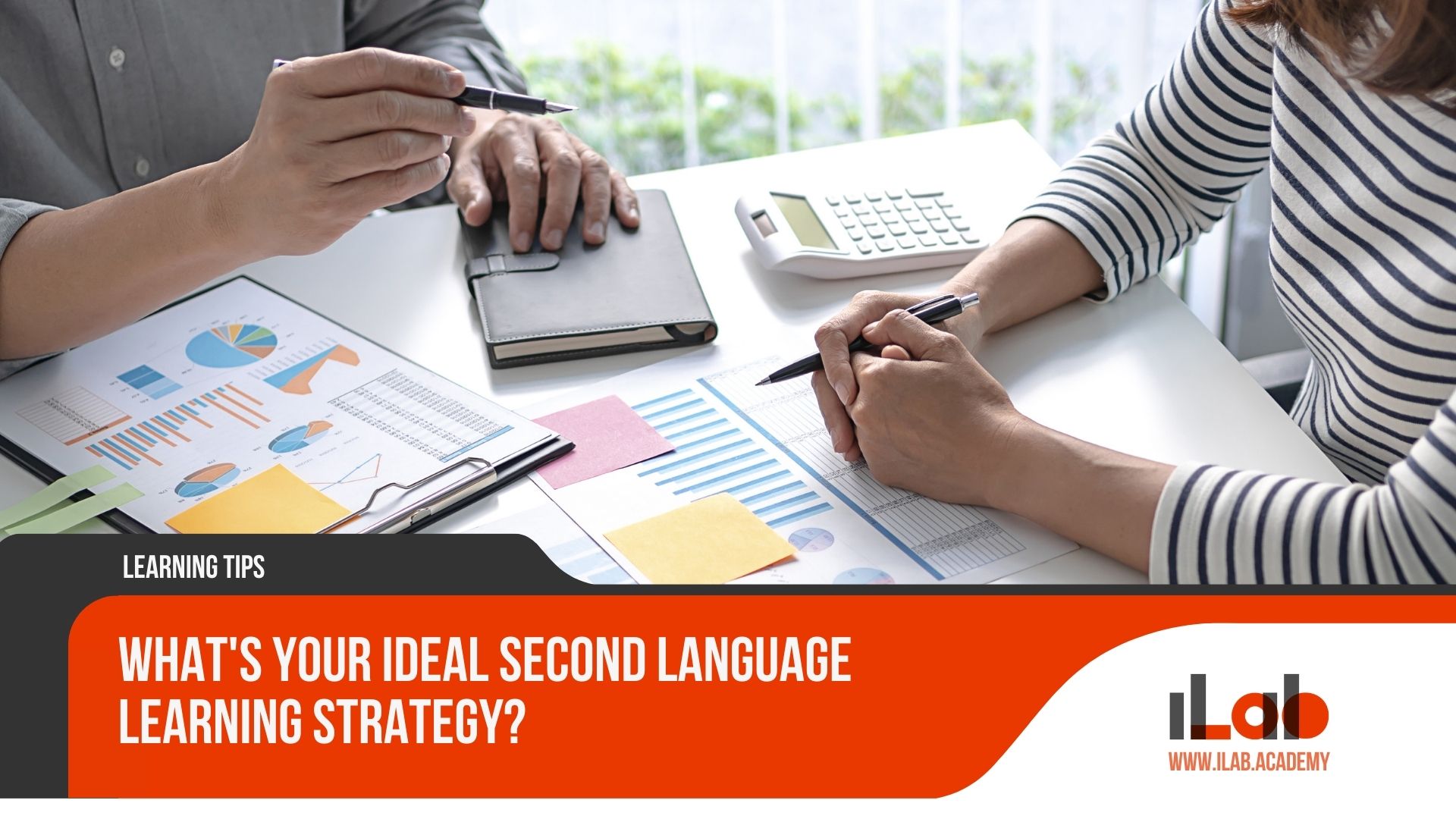Table of contents
As the saying goes, “Variety is the spice of life,” and this couldn’t be truer when it comes to learning a second language. I’ve found that a personalized approach is essential, integrating methods that resonate with my learning habits and lifestyle. In my quest for fluency, I consider my individual goals, whether that’s conversational ease or professional proficiency. I blend immersive techniques with structured lessons, ensuring I’m consistently challenged yet not overwhelmed. I’m also keen on harnessing technology’s vast resources, from language apps to virtual conversations with native speakers. In this article, I’ll share my journey and the strategies I’ve honed, aiming to inspire you to find the language learning path that feels just right for you. Let’s embark on this linguistic adventure with a clear vision and adaptable tactics, tailored to our personal aspirations and needs.
Key Takeaways
- Setting clear and attainable language goals is essential for a successful second language learning strategy. These goals should be specific, measurable, achievable, relevant, and time-bound (SMART).
- Understanding your learning style, whether visual, auditory, kinesthetic, or reading/writing, can inform more effective language learning strategies. Tailor your approach to align with your learning style.
- Consider the benefits and challenges of immersion versus structured learning. Integrate elements of immersion into a structured plan or vice versa to enhance language learning.
- Utilize technology to support language learning, such as language learning apps, online tutors, and language exchange platforms. These digital resources can facilitate vocabulary building, speaking practice, and other aspects of acquiring a second language.
Setting Clear and Attainable Language Goals
I’ve found that setting SMART goals—specific, measurable, achievable, relevant, and time-bound—is a crucial step in creating a successful language learning strategy. As a language enthusiast, I’ve learned the hard way that without clear goals, it’s easy to lose direction and motivation. By setting goals that are well-defined and realistic, I give myself a roadmap to follow, making the journey toward language proficiency both manageable and rewarding.
For instance, instead of vaguely aiming to “get better” at Spanish, I set a goal to hold a 15-minute conversation with a native speaker within three months. This goal is specific (a conversation), measurable (15 minutes long), achievable (with dedicated practice), relevant (conversational skills are important to me), and time-bound (within three months). Similarly, when I wanted to improve my Russian reading skills, I chose to read a short novel in Russian, tracking my progress by the number of pages I read each week.
Different types of goals cater to various aspects of language learning, such as achieving conversational fluency, mastering grammar, or expanding vocabulary. It’s essential to tailor these goals to personal interests and needs. For example, if I’m planning to travel to Germany, I might focus on language skills related to travel and hospitality. This way, my learning aligns with real-world use.
As I pursue my language goals, I also consider how I learn best. Do I remember information better when I see it, hear it, or interact with it? Understanding my learning style is the next logical step. It informs how I approach my goals and helps me select the right tools and methods for effective learning. Let’s dive into assessing your learning style to further refine our language learning strategies.
Assessing Your Learning Style
Identifying my learning style was the second critical step in crafting a strategy that truly worked for me. This self-assessment was a transformative moment, as it illuminated the specific methods that resonate with my unique way of processing information. I realized that I’m primarily a visual learner, but I also benefit from kinesthetic experiences. Knowing this allowed me to tailor my approach to language learning, integrating tools and activities that cater to these preferences.
Here’s a snapshot of the approaches I considered:
| Learning Style | Tools | Emotions Evoked |
|---|---|---|
| Visual | Flashcards, charts | Clarity, confidence |
| Auditory | Podcasts, songs | Engagement, curiosity |
| Kinesthetic | Role-playing, gestures | Excitement, empowerment |
The table above isn’t just a list; it’s a map of my journey, highlighting the paths that lead to moments of joy and achievement in my language learning experience. Flashcards and charts brought a sense of clarity and confidence, as I could visualize word associations and grammar structures. Listening to podcasts and songs engaged my senses and piqued my curiosity, while role-playing and using gestures excited me and made me feel empowered to use the language actively.
For you, the tools and emotions might be different. It’s about finding what clicks for you, what makes the language come alive in your mind and heart. It’s about the thrill of understanding a podcast or the satisfaction of using a new verb correctly. It’s deeply personal.
As I consider the next step of my language learning journey, I can’t help but wonder how immersion vs. structured learning will play into my visual and kinesthetic tendencies.
Immersion vs. Structured Learning
As I delve into the third cornerstone of my language learning strategy, I’m faced with a choice: the full plunge of immersion or the systematic approach of structured learning. Both paths offer unique benefits and pose distinct challenges. Immersion can be an exhilarating dive into the deep end, providing a constant, real-life context to practice and understand a language. It’s about adapting on the fly, picking up colloquialisms, and grasping cultural nuances firsthand. But it can also be daunting, with the risk of feeling overwhelmed by the relentless pace of native speakers.
On the other hand, structured learning gives me a clear roadmap. It’s organized, methodical, and often involves a curriculum that ensures all language aspects are covered. I can track my progress, focus on specific areas for improvement, and enjoy the support of instructors or structured course materials. However, it may lack the spontaneity and practical engagement that come with real-world conversations.
I’m considering how to balance these approaches to fit my language learning needs. By integrating immersion elements into structured learning, such as conversation clubs or watching foreign media, I can enjoy the best of both worlds. Conversely, I can inject structure into an immersive environment by setting aside time for focused grammar study or vocabulary expansion.
Ultimately, my decision depends on my personal goals, lifestyle, and the resources available to me. I’m keen on creating a hybrid strategy that capitalizes on structured lessons for foundation building, complemented by immersive experiences for practical application and cultural understanding. This tailored approach should steer me towards fluency in a way that’s both effective and enjoyable.
The Role of Technology in Language Learning
Technology’s impact on language learning has revolutionized the way I access and engage with my target language. Nowadays, I can immerse myself in a new language without even stepping outside my home. Language learning apps have become my go-to for daily vocabulary drills. They’re intuitive and make memorization feel more like a game than a chore. When I hit a plateau with words and phrases, I switch to online tutors. These real-time conversations provide the human interaction necessary for language acquisition and offer immediate feedback that’s invaluable for my progress.
I’m also a big fan of language exchange platforms. They connect me with native speakers around the world, allowing us to help each other learn our respective languages. It’s a win-win situation where I’ve not only improved my speaking skills but also gained insights into different cultures. Other digital resources, such as podcasts and videos, have enriched my listening comprehension. I can tune into the nuances of pronunciation and intonation, something traditional textbooks could never offer me.
Moreover, technology has made it easier to track my progress. With various analytics tools, I can see where I’m excelling and where I need to focus more. It’s empowering to observe my improvements quantitatively, which, in turn, motivates me further.
In short, technology has tailored language learning to my lifestyle. It’s flexible, accessible, and interactive, ensuring that I can learn efficiently and effectively. There’s no denying that tech has transformed how I approach language learning, making the journey toward fluency an engaging and enjoyable one.
Frequency and Consistency in Practice
Regularly incorporating language practice into my daily routine has been essential for maintaining the momentum of my learning journey. It’s not just about finding time to study; it’s about creating a habit that weaves language learning into the fabric of my everyday life. Whether it’s listening to a podcast in the target language during my morning run, or switching my phone’s language settings, these small, consistent actions cumulatively build my language proficiency.
I’ve found that frequency is just as crucial as the duration of study sessions. Dedicating short periods to language practice, but doing it every day, often leads to better retention and recall than infrequent, longer study periods. It’s about keeping the language at the forefront of my mind so that it becomes a part of my thought process, rather than a separate, isolated skill that I tap into only during ‘study time.’
Moreover, consistency in practice has helped me progress steadily. By setting aside time daily, I’m able to review and build upon what I’ve learned previously. This regular exposure prevents me from forgetting material and having to relearn it, which can be both frustrating and time-consuming. To keep my practice consistent, I’ve integrated language learning into activities I already enjoy, such as reading news articles or watching films in the language I’m learning. This not only reinforces my skills but also keeps the experience enjoyable and engaging.
Measuring Progress and Re-evaluating Goals
How do I know I’m truly advancing in my language learning journey without tangible benchmarks to measure my progress? It’s a question I often ask myself as I navigate through the various stages of language acquisition. To stay motivated and ensure that I’m on the right path, I’ve found it essential to keep track of my progress and periodically re-evaluate my goals.
To begin with, I set clear, actionable milestones. These might be as straightforward as mastering a set number of vocabulary words each week or as complex as holding a 15-minute conversation with a native speaker. As I reach each milestone, I take the time to celebrate my achievements, no matter how small.
I also use several methods to gauge my progress:
- Self-assessment tools: I often use quizzes and language apps that provide immediate feedback on my proficiency.
- Reflective practice: I keep a journal where I write down my experiences in learning the language, noting any difficulties and breakthroughs.
- Language exchange feedback: Conversing with native speakers gives me real-time insights into my speaking and comprehension skills.
- Progress tests: Periodic tests, whether formal or through apps, help me identify areas where I need to focus more.
These strategies not only help me measure my growth but also highlight when it’s time to re-evaluate my goals. Perhaps I’ve mastered conversational speech but struggle with writing. Recognizing this allows me to adjust my strategy, dedicating more time to practice writing. It’s this cycle of measurement and adjustment that keeps my language learning dynamic and tailored to my evolving needs.
The Importance of Cultural Context
In my pursuit of language proficiency, I’ve discovered that immersing myself in the cultural nuances of the language significantly enriches the learning experience. It’s not just about mastering grammar or expanding vocabulary; it’s about grasping the soul of the language, which is deeply rooted in its culture. I’ve found that understanding cultural references, idiomatic expressions, and social norms offers invaluable insights that textbooks alone can’t provide.
I integrate cultural learning into my practice by exploring a range of mediums. I delve into literature to appreciate the stylistic choices native speakers make. I watch films and TV shows to attune my ear to natural speech patterns and to understand the context in which certain phrases are used. Participating in cultural events, when possible, provides me with a hands-on experience of traditions and customs, while allowing me to practice the language in an authentic setting.
It’s fascinating how language reflects the values and beliefs of a society. By learning about etiquette and social expectations, I’ve avoided potential faux pas and engaged more meaningfully with native speakers. It’s not just about speaking a language; it’s about connecting with the people who speak it.
Frequently Asked Questions
How Can I Overcome Language Learning Plateaus When It Feels Like I’m No Longer Making Progress?
I’ve hit a few plateaus myself, and what really helps is shaking things up. I’ll try new methods, like switching from textbooks to podcasts, or joining a language exchange. Sometimes, I set smaller goals to regain a sense of progress. It’s also crucial to remember that plateaus are normal; they’re just signs that it’s time to challenge myself differently. Patience and persistence always get me through these rough patches.
What Are Some Effective Strategies for Retaining a Language Once I’ve Reached a Level of Proficiency?
To retain a language I’ve learned, I mix it up: I practice daily, watch movies, read books, and chat with native speakers. I also teach others; explaining concepts really cements my knowledge. Regularly refreshing grammar and vocabulary is key, too. Staying immersed, even virtually, keeps the language alive for me. It’s about consistent use and enjoying the process—otherwise, it’s easy to lose proficiency. Always challenging myself prevents stagnation and keeps it fun!
How Do I Balance Learning Multiple Languages at Once Without Confusing Them or Hindering My Progress in Each?
I’m tackling multiple languages by setting distinct study times for each. I avoid mixing them up by focusing on one language’s unique aspects, like pronunciation or idioms. I also practice consistently, ensuring I don’t favor one language over the others. It’s a balancing act, but by staying organized and using language-specific resources, I’m making steady progress without hindering my learning journey in any of the languages.
Can Learning a Second Language Improve My Cognitive Abilities, and if So, in What Ways?
Yes, learning a second language can boost my cognitive abilities. It sharpens my memory, enhances multitasking skills, and delays the onset of age-related cognitive decline. It also improves problem-solving, critical thinking, and listening skills. By becoming bilingual, I’m more attentive and able to better process information, which is beneficial in various aspects of life. So, it’s not just about communication; it’s about nurturing a more agile and healthy brain.
How Do I Maintain Motivation When the Excitement of Learning a New Language Starts to Wane?
When my motivation dips in language learning, I change things up. I’ll watch a movie or find a song in the language to reignite my excitement. Setting small, achievable goals helps too—it’s all about celebrating the little victories. Sometimes, I’ll connect with native speakers for a chat; it reminds me why I’m learning. It’s normal for enthusiasm to fluctuate, but I always find a way to keep the spark alive.
Conclusion
Wrapping it up, I’ve found that setting SMART goals, tuning into my learning style, and striking a balance between immersion and structure are key. Tech’s been a game-changer, and sticking to a regular practice routine is non-negotiable. Tracking progress keeps me motivated and adjusting my goals keeps me on target. Most importantly, soaking up the culture breathes life into the words I learn. It’s a personal journey, and I’m crafting a strategy that’s uniquely mine. Let’s get fluent together!










